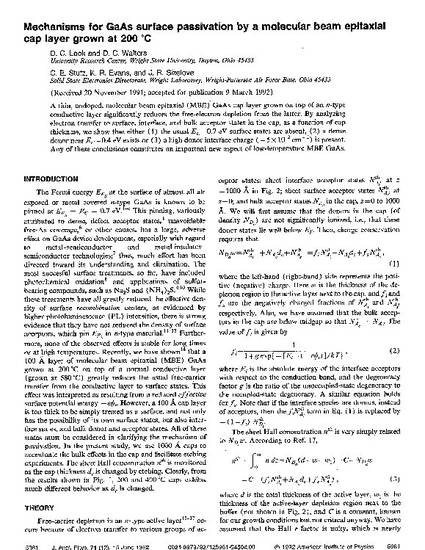
Article
Mechanisms for GaAs Surface Passivation by a Molecular-Beam Epitaxial Cap Layer Grown At 200-Degrees-C
Journal of Applied Physics
Document Type
Article
Publication Date
6-1-1992
Disciplines
Abstract
A thin, undoped, molecular beam epitaxial (MBE) GaAs cap layer grown on top of an n‐type conductive layer significantly reduces the free‐electron depletion from the latter. By analyzing electron transfer to surface, interface, and bulk acceptor states in the cap, as a function of cap thickness, we show that either (1) the usual EC−0.7 eV surface states are absent, (2) a dense donor near EC−0.4 eV exists or (3) a high donor interface charge (∼5×1012 cm−2) is present. Any of these conclusions constitutes an important new aspect of low‐temperature MBE GaAs.
DOI
10.1063/1.350450
Citation Information
David C. Look, D. C. Walters, C. E. Stutz, K. R. Evans, et al.. "Mechanisms for GaAs Surface Passivation by a Molecular-Beam Epitaxial Cap Layer Grown At 200-Degrees-C" Journal of Applied Physics Vol. 71 Iss. 12 (1992) p. 5981 - 5984 ISSN: 0021-8979 Available at: http://works.bepress.com/david_look/106/

Copyright © 1992, American Institute of Physics. This article may be downloaded for personal use only. Any other use requires prior permission of the author and the American Institute of Physics. The following article appeared in the Journal of Applied Physics 71.12, and may be found at http://jap.aip.org/resource/1/japiau/v71/i12/p5981_s1